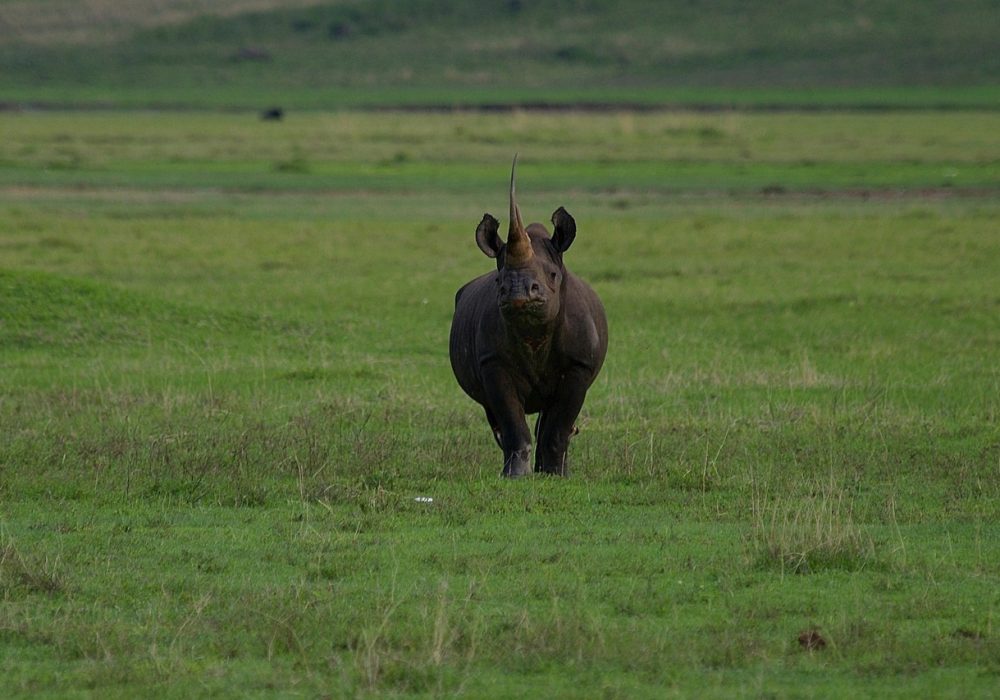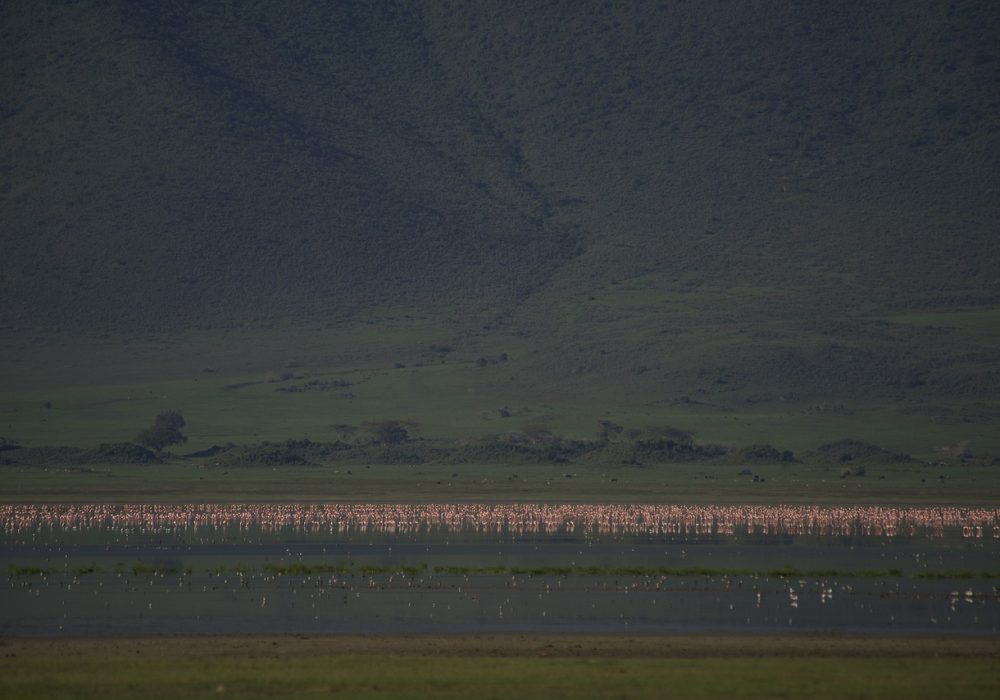

Ngorongoro Crater
Ngorongoro Crater, often referred to as the “Eden of Africa,” is one of the most iconic natural wonders in the world. It is located in the Ngorongoro Conservation Area in northern Tanzania and is famous for its unique ecosystem, abundant wildlife, and stunning landscapes. Here’s everything you need to know about visiting Ngorongoro Crater:
1. Welcome & Accessibility
The Ngorongoro Crater is located in the Ngorongoro Conservation Area, which is about a 3-4 hour drive from Arusha and Tanzania’s Kilimanjaro International Airport (JRO). The area is well-connected by road, and most visitors typically access it through organized tours, often combined with other nearby attractions like the Serengeti National Park or Lake Manyara.
Ways to get there:
- By Road: The easiest way to reach the Ngorongoro Crater is by driving from Arusha or Moshi. It’s about a 180 km drive (around 3 hours) from Arusha.
- By Air: There are small, local airports at Manyara (Lake Manyara Airstrip) and Seronera (in the Serengeti) that offer chartered flights to the region. You can also fly into Kilimanjaro International Airport and drive to the crater.
Entrance Fees: There is an entrance fee to the Ngorongoro Conservation Area, and visitors also need to pay for a vehicle permit. Fees for non-residents can vary depending on the season, so it’s always good to check the latest rates.
2. Climatic Conditions
The climate in the Ngorongoro Crater is mild due to its altitude (about 2,200 meters above sea level), making it a comfortable place to visit year-round.
- Temperature: The temperatures in the crater vary between 10°C (50°F) at night and 25°C (77°F) during the day. It’s generally cool, especially in the mornings and evenings.
- Rainy Season: The wet season runs from March to May, which can make some roads slippery, and conditions in the crater may be more challenging. The dry season from June to October is considered the best time to visit as animals tend to gather around the water sources, making wildlife viewing easier.
3. Activities
Ngorongoro Crater offers a range of exciting activities for visitors, most of which focus on its incredible wildlife, stunning landscapes, and cultural experiences. Here are the key activities:
Game Drives: The most popular activity in the crater is a game drive, where visitors can explore the crater floor in a 4×4 vehicle. The crater is home to a wide variety of wildlife, including the Big Five (lions, elephants, buffalo, leopards, and rhinos), as well as cheetahs, zebras, gazelles, hyenas, and numerous bird species.
- Morning and afternoon game drives are available, and each offers a different experience. Early morning drives are especially rewarding for animal sightings when predators are active, and the lighting is ideal for photography.
Ngorongoro Crater Rim Walk: There are guided walking safaris along the crater rim, offering spectacular panoramic views of the crater floor and the surrounding landscape. The walks are led by trained rangers, and visitors get to enjoy the beauty of the area on foot while learning about the local flora and fauna.
Cultural Visits: A unique aspect of the Ngorongoro Conservation Area is that it is home to the Maasai people, who live alongside wildlife and help manage the conservation area. Visitors can take part in cultural tours to Maasai villages where they can learn about traditional Maasai life, customs, and their coexistence with wildlife.
Birdwatching: The crater is home to a wide variety of birds, including flamingos, ostriches, hornbills, and the endangered Grey Crowned Crane. Birdwatchers will find the crater an excellent place for spotting both common and rare species.
Photography: With its stunning landscapes and abundant wildlife, Ngorongoro Crater offers some of the best photography opportunities in Africa, from wide-angle shots of the crater floor to close-ups of the animals.
Ngorongoro Crater Floor Exploration: The floor of the crater is 264 square kilometers of flat, open grassland, lake areas, swamps, and forested areas. Exploring this diverse landscape is an adventure in itself, where wildlife is often close to the road, making it easy to spot and photograph.
4. Attractions
Ngorongoro Crater is full of natural beauty and fascinating wildlife, but there are several standout attractions within the crater and its surroundings:
Ngorongoro Crater Floor: The crater floor itself is the main attraction, providing a unique ecosystem where animals live in close proximity. It is home to a high density of wildlife, including a significant population of black rhinos, making it one of the best places in Africa to see these endangered animals.
Lake Magadi: Situated on the crater floor, Lake Magadi is a soda lake where flamingos can often be seen feeding. The lake creates a beautiful contrast with the green grasslands and is a good place to observe birds and other wildlife.
The Maasai Bomas (Villages): In the Ngorongoro Conservation Area, visitors can visit the traditional Maasai bomas (homesteads), where they can see how the Maasai live, interact with the community, and even experience a traditional dance or ceremony.
Crater Rim Viewpoints: Several viewpoints around the crater rim offer breathtaking panoramic views of the crater floor below. These spots are perfect for photography and taking in the immense scale of the crater, which is often referred to as the “Garden of Eden” for its lush vegetation and wildlife.
Olduvai Gorge: While not inside the crater itself, Olduvai Gorge is nearby and is a must-see attraction for those interested in archaeology and human history. Known as the “Cradle of Mankind,” it’s one of the most important paleoanthropological sites in the world, where some of the earliest human fossils were discovered.
5. Additional Tips for Visitors
- Acclimatization: Since Ngorongoro Crater is located at a high altitude, visitors may feel the effects of altitude sickness (though mild), so it’s recommended to take it slow at first.
- Packing: Bring layers of clothing as it can be chilly in the mornings and evenings but warm during the day. Don’t forget sunscreen, hats, and good binoculars for game viewing.
- Guides: While game drives can be done in your own vehicle, it’s highly recommended to hire a local guide. A knowledgeable guide enhances the experience and ensures you don’t miss out on spotting animals or learning about the environment.
Conclusion
Ngorongoro Crater is one of Africa’s most spectacular natural wonders, offering visitors incredible opportunities for wildlife viewing, photography, cultural experiences, and hiking. Whether you’re there to see the “Big Five,” explore Maasai culture, or simply enjoy the breathtaking landscapes, the Ngorongoro Conservation Area is an unforgettable destination.
